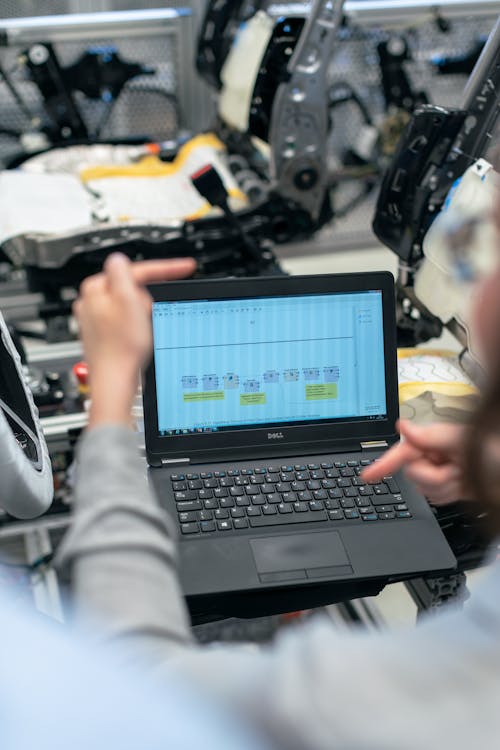What is usability testing?
One kind of user research is usability testing, which assesses how easy it is for users to engage with an internet page or app. It assists your product teams and designers in determining how user-friendly and intuitive your products are. Usability testing involves asking actual users to complete a set of usability activities on your product instead of developers or designers, which helps you find issues with your product that you might have overlooked otherwise.
The outcomes, rate of success, and routes followed to finish the activities are then examined to find possible problems and areas that could use improvement. Developing a product that addresses user issues and facilitates satisfied goal achievement is the ultimate aim of usability testing.

What is a usability test?
By watching actual users as they try to do activities on a website, application, or other digital product, usability testing is a technique for evaluating its usefulness. Researchers employed by a company typically watch the users during an in-person or, more frequently, remote usability evaluation session.
Usability testing is to identify potential areas for improving the overall user experience by highlighting confusing regions and discomfort points in the customer journey. The purpose of usability evaluation is to assess the product’s usefulness, i.e., how well a user accomplishes a predetermined task.
Usability testing is carried out by actual users, who are likely to find problems that users who are familiar with a website are no longer able to recognize. Often, designers, advertisers, and product owners can overlook usability problems on websites because of their extensive expertise.
Usability test online
Here are the steps to run a usability test online:
Find participants
Find volunteers to do the usability tests who are neither engineers nor QAs. For testing reasons, it is preferable to identify people who are comparable to the target audience, as this group will mostly consist of persons with limited technical understanding. If this isn’t possible, look for members of other teams who don’t know anything about the project.
Start testing
Assign testers particular tasks to complete, then watch how they approach them. To determine the website’s usability, watch users as they use it rather than having them provide in-depth reports. Ask them to narrate aloud as well so you can follow their thought process. This method will assist in finding more usability issues and roadblocks.
Use real browsers
It is necessary to test the usability of websites in several phases, including the original concept and each new prototype. Refine and reorganize subsequent development procedures based on input from each test. During usability testing, make use of actual browsers and devices. Regardless of the emulator or simulator being utilized, their ability to replicate genuine user conditions prevents them from providing results that are 100% correct.

Usability test for websites
When doing website usability testing, quality assurance specialists run the website through several user scenarios that are likely to occur during use. It entails carrying out several user actions that are typically carried out by first-time website users.
Another member of the QA team keeps an eye on user actions to assess the site’s usability. Feedback is given instantly since any issues that arise throughout the test procedure can be seen and noted by the observer right away.
Take note that people unrelated to the website’s development must perform online usability testing. Real users who might utilize the site after it goes public should ideally be included in this. If this isn’t possible, usability tests can be carried out by QAs from a different team within the same company to prevent prejudice in the process of making a website more user-friendly.

Usability testing process
Here is a step-by-step guide to the usability testing process:
Plan the test
Plan regarding what functions you want to test and how to offer its functionalities to users.
List the top user objectives for your website or product to be tested. These objectives will serve as your success benchmarks.
Find participants and location
To conduct your usability test, reserve a quiet room and enlist three to five volunteers.
While not required, it is preferable if the participants reflect the target demographic of your website. It would be good to test your product on students (undergraduates and graduates, from different institutions, etc.) if you are developing an app for students, for instance.
Conduct the test
Utilizing your script for usability testing, walk participants through each of the situations you have developed. It is advisable to capture the test subject’s screen on camera if it’s a website usability test. In this manner, you may watch the videos again to see if you overlooked anything throughout the session and you won’t have to bother about taking notes when taking the test.
Fix the problems
When you do usability testing with people, the most critical problems will stand out to you. For instance, if the majority of your participants travel to the wrong page, click on the incorrect button, or become confused. Jot down the top problems you observed in the usability tests and then work on fixing them.

Usability testing guidelines
Here are some guidelines for conducting a usability test:
- Recognize the priorities of users and businesses. Your objectives will determine how your testing is conducted and what behaviors you see.
- Your core persona, or ideal user, is someone you should know. Don’t tailor your content to those who aren’t part of your intended audience.
- As the moderator, get your script ready. Maintain a relaxed discussion. Ask structured inquiries that encourage your subjects to discuss their needs and values. Make each inquiry as open-ended as possible.
- Use data to segment your in-person users according to their lifetime value, or LTV.
- Give them a task to complete: These have to be predicated on your website’s major, secondary, and tertiary functions.
- Utilize session records to divide up your audience into groups according to actions, behavior, demographics, and traffic sources.
- Avoid leading or interrupting consumers since this can tamper with your data. Try your best to be a neutral moderator during the physical test with very little guidance or contact.
- Make a note of any confusing times to pinpoint trouble spots. Keep an eye out for clicks, gestures, pauses, and exploratory scrolls.
- Establish a welcoming, organic space for people to engage with your goods for optimal outcomes.
User usability testing
The brief response to the issue of when usability testing should be done is early and regular. From the post-launch stage to the prototyping stage, usability testing is an ongoing procedure. Test your low-effort prototypes during the conceptual stage before making any design decisions. This will disclose user input and pain issues that you can address.
Conduct tests at every stage of the manufacturing process to get insight into user behavior, identify areas for improvement, and determine the best ways to address issues. Testing often helps you build goods with deep human knowledge and maintains your client at the center of your business.

Benefits of usability testing
The following are some significant benefits of conducting usability testing:
Customized products for your users
Direct user interaction and observation of how people interact with your product will help you better understand their wants and design the product to meet those demands and solve problems more successfully.
Minimized developmental costs
Usability testing helps you prevent costly development errors, which saves time and money. For instance, you can address issues before launch if you discover that people have trouble using a certain feature. Making adjustments before launch is far less expensive than doing it after a product has been released.
Increased customer satisfaction
Before delivering a new product or feature, usability testing helps product teams find possible problems and fix them. Better user experiences can result from this more frequently, building a devoted user base and favorably reflecting your brand’s reputation as a whole.
Improved accessibility
Adhering to accessible guidelines and standards is crucial, but giving accessibility top priority will also benefit your product. Incorporating users with varying abilities and requirements into the usability testing procedure fosters and advances a more equal digital environment.
Well-managed cognitive biases
By providing unbiased feedback from actual users, usability testing helps counteract biases like the false-consensus impact and guarantees that design choices are based on genuine user behavior rather than presumptions or the opinions of individuals who are already familiar with the product.

Methods of usability testing
The following are some prominent methods of usability testing:
Remote testing
When conducting remote testing, moderators design a test plan and assign users to complete a series of activities in their environment. Either a self-guided test or one conducted with a moderator via conference call or webinar technology can be used for this kind of user testing.
Card sorting
Users collect sets of things and assign names or labels to them; this method is frequently used for testing taxonomies or navigation structures. Finding appropriate names for different user interfaces, screens, pages, or functions as well as how to organize them can be learned from this kind of testing.
In-person testing
This kind of test is conducted with individuals or in small groups by a few observers in a set setting, such as a conference room. After completing a series of activities, users are given the option to interact with the observer at any time by asking questions or carrying out more investigations.
A/B testing
A/B testing is a kind of testing methodology that uses two live variations of a website or app and sends fifty percent of the traffic to one of them and a half to the other, collecting the data to determine which variation had a higher conversion rate.

Usability testing tools
For digital products to satisfy the requirements of their target audience and to improve user experience, selecting the appropriate usability evaluation platform is essential. Usability testing provides vital information about how consumers engage with a product, pinpointing areas in need of development and confirming design choices.
Teams may improve customer satisfaction, expedite their development process, and eventually increase conversion rates and user retention by utilizing these technologies.
Bottom line
Usability testing is a crucial analysis that helps to eradicate issues and flaws in websites and products. By utilizing the tips mentioned above and using effective management tools, you can easily conduct the perfect usability test. You can also contact us at Pimberly if you require the best management tools in town.













